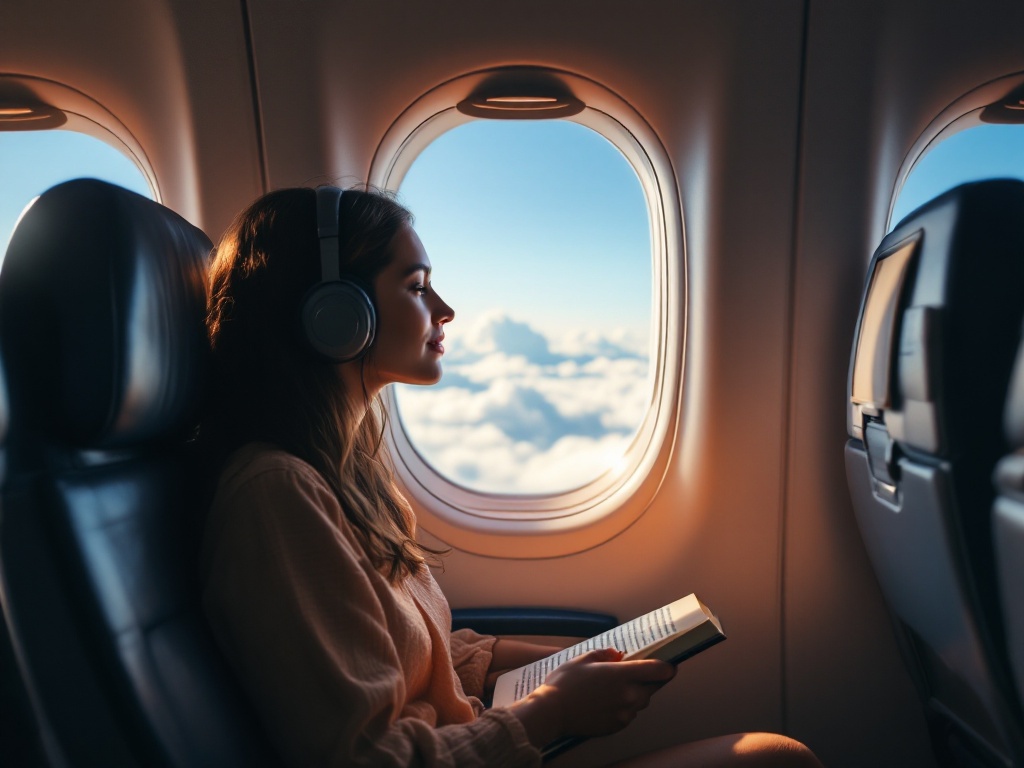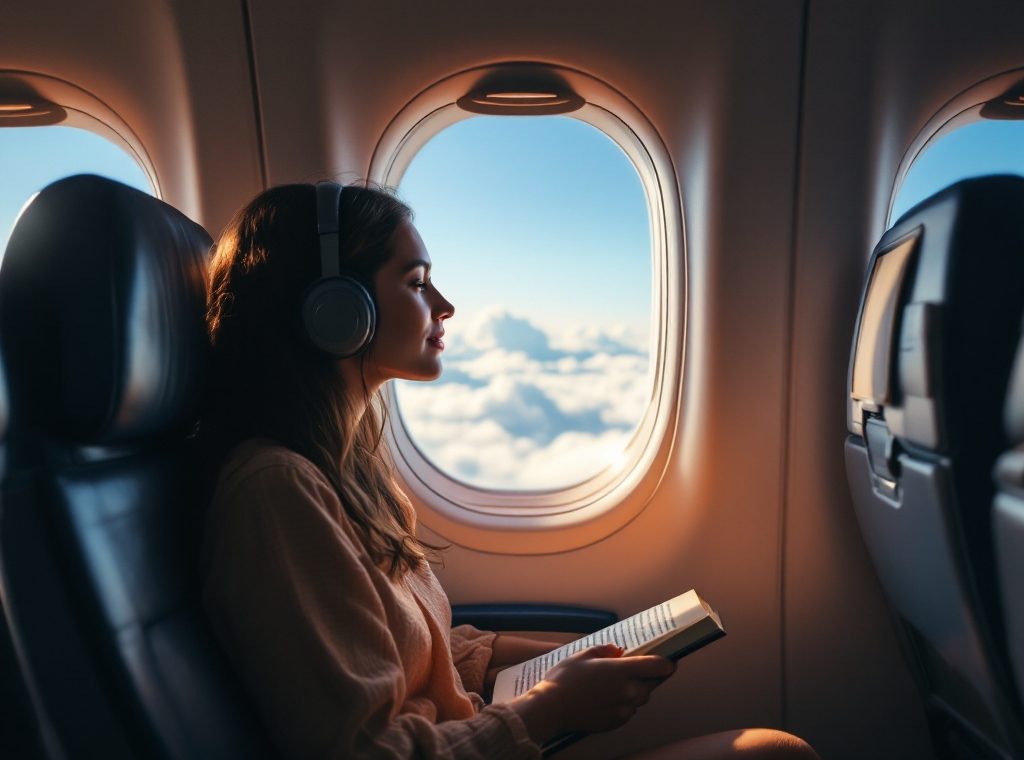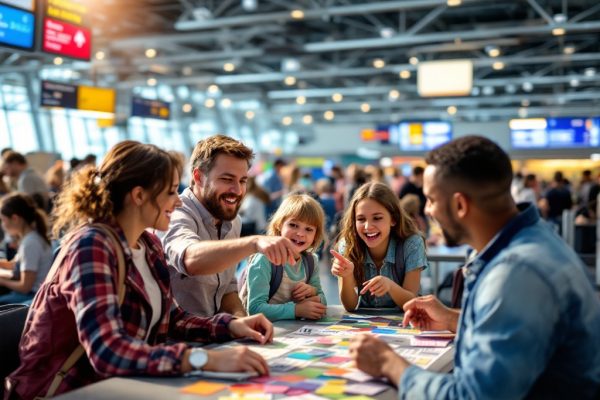What is the Best Way to Deal with Flight Anxiety?
Do you dread air travel? Flight anxiety, or aviophobia, affects many, stemming from various triggers like heights, enclosed spaces, or past experiences. This comprehensive guide explores the causes of flight anxiety and offers practical solutions, from understanding your triggers to utilizing CBT and mindfulness techniques. Discover how to choose the right seat, manage in-flight anxiety with grounding exercises, and even use positive visualization for a calmer journey. Take control and reclaim your love of travel – read on to conquer your fear of flying.
Important information

- Flight anxiety, also known as aviophobia or aerophobia, can be triggered by heights, enclosed spaces, loss of control, past negative experiences, or media coverage of accidents.
- Effective self-help strategies include understanding your triggers, learning about flight safety, choosing the right seat (often over the wing for less turbulence), and practicing relaxation techniques like deep breathing, the 5-4-3-2-1 grounding method, and positive visualization.
- Therapeutic techniques such as Cognitive Behavioral Therapy (CBT) and exposure therapy can help address the root causes of fear and gradually desensitize individuals to flying-related situations.
- Mindfulness, mindful breathing, guided meditation, and hypnosis are valuable tools for managing anxiety and promoting relaxation before and during flights.
- If self-help strategies are insufficient, seeking professional help from a therapist is recommended. They can offer personalized coping strategies and therapies like CBT and exposure therapy.
What is Flight Anxiety and What Causes It?
Flight anxiety, or aviophobia, affects many individuals. This fear of flying often stems from acrophobia (fear of heights) or claustrophobia (fear of enclosed spaces). The feeling of lost control during flight can also be a significant trigger, as can previous negative experiences, such as severe turbulence. Understanding your specific anxieties is the first step toward managing them.
Understanding Flight Anxiety
Flight anxiety, also known as aviophobia or aerophobia, is a common fear that can occur before, during, or even after a flight. Physical symptoms, such as a racing heart and sweating, often accompany the mental distress of panic and dread. Several factors can contribute to this fear, including past negative flight experiences, acrophobia (fear of heights), claustrophobia (fear of enclosed spaces), and a perceived lack of control. Media coverage of aviation accidents can also exacerbate these anxieties. Understanding your specific triggers is crucial for effective management of flight anxiety.
Common Causes of Aviophobia
Several factors contribute to aviophobia, or the fear of flying. A fear of heights, known as acrophobia, plays a role, as does the feeling of losing control while airborne. Past negative experiences can also trigger the phobia.
Effective Strategies for Managing Flight Anxiety
Conquering your fear of flying starts with identifying your triggers. Educating yourself about flight safety empowers you and significantly diminishes anxiety. Choosing the right seat can also make a difference.
Aisle Seat
An aisle seat offers more personal space and easier access to restrooms.
Window Seat
A window seat provides a calming view and a greater sense of control.
For a smoother journey, consider sitting over the wing.
Recognizing and Understanding Anxiety Triggers
Several factors can contribute to flight anxiety, often stemming from specific aspects of air travel. Common triggers include turbulence, takeoffs, and landings, as well as the altitude. The enclosed environment of the aircraft can induce claustrophobia, while the lack of control can be unsettling. Mechanical malfunctions are another source of concern for some travelers. Past negative experiences, such as a prior turbulent flight, can also fuel anxiety, as can media portrayals of air disasters. Identifying these triggers is the first step toward managing and overcoming your fear of flying, enabling you to develop effective coping strategies.
Common Triggers of Flight Anxiety:
- Turbulence, takeoffs, and landings.
- High altitude.
- Enclosed environment (claustrophobia).
- Lack of control.
- Potential mechanical malfunctions.
Other Contributing Factors:
- Past negative flight experiences.
- Media portrayals of air disasters.
Identifying these triggers is the first step in managing and overcoming your fear of flying.
Education and Knowledge About Flight Safety
Knowledge is power, especially when conquering your fear of flying. Understanding comprehensive safety measures can significantly ease anxiety. Statistically, flying is safer than driving. The odds of a plane crash are incredibly slim—about one in 11 million. Moreover, survival rates in such incidents are remarkably high, often exceeding 95%. That bumpiness you sometimes feel? Turbulence is a normal, generally harmless part of air travel.
Choosing the Right Seat for Comfort
Enjoy extra space and easy access to amenities with an aisle seat. It’s also ideal for stretching your legs.
For specific seat requests, just ask the airline staff – they’re usually happy to assist.
Concerned about turbulence? Seats over the wing often provide a smoother ride.
If window views bother you, an aisle or middle seat might be a more comfortable choice. Ultimately, the best seat is one that addresses your individual anxieties.
Therapeutic Techniques to Reduce Flight Anxiety
Cognitive Behavioral Therapy (CBT) helps identify and change negative thoughts about flying, targeting the fear’s root cause.
Exposure therapy gradually introduces flying-related situations, such as visiting an airport or watching flight videos, to desensitize you to triggers.
Mindfulness and mindful breathing promote relaxation and reduce in-flight anxiety.
Guided meditation and hypnosis can also create a sense of calm and control, lessening flight-related stress.
Cognitive Behavioral Therapy (CBT)
Cognitive Behavioral Therapy (CBT) helps you pinpoint and challenge negative thoughts about flying, replacing catastrophic predictions with realistic assessments. By asking yourself, “What are the real chances of this happening?”, you begin to reframe your anxieties. CBT also equips you with practical coping mechanisms to manage in-flight nervousness. Furthermore, its virtual availability makes it incredibly accessible.
Exposure Therapy and Gradual Exposure
Exposure therapy, a type of cognitive-behavioral therapy, is a powerful tool for overcoming flight anxiety. It works by gradually and safely exposing you to flying-related situations, starting with simply thinking about flying and eventually progressing to taking a flight. This measured approach helps you become comfortable with air travel.
Think about flying. Start by simply thinking about flying and visualizing yourself on a plane.
Visit an airport. Go to an airport and observe the activity, becoming more accustomed to the environment.
Sit in a grounded plane. Take the next step by sitting in a parked aircraft to acclimate yourself to the interior.
Take short flights. Begin with shorter flights to gradually desensitize yourself to the experience of being in the air.
This gradual process desensitizes you to the stressors of flying, reduces anxiety, and builds coping mechanisms to manage your fear, ultimately empowering you to control your flight anxiety.
Mindfulness and Mindful Breathing
Mindfulness centers you in the present moment, reducing anxiety by redirecting your attention away from anxious thoughts. Focusing on each breath, a practice called mindful breathing, calms your nervous system and promotes relaxation, which can be particularly helpful for flight anxiety. Research indicates mindfulness effectively manages anxiety disorders and improves overall well-being. While a powerful tool for stress management, mindfulness requires practice and patience. Begin with short mindful breathing exercises, gradually increasing their length, and experience the positive impact mindfulness can have.
Guided Meditation and Hypnosis
Guided meditation promotes relaxation by focusing your mind on a specific object, sound, or image, thus reducing anxiety. Hypnosis similarly induces a state of deep focus, increasing your receptiveness to suggestions. This heightened suggestibility can be particularly helpful in altering negative thoughts about flying. Both techniques are proven methods for managing flight anxiety. If flying makes you anxious, consider exploring these methods to enhance your comfort and enjoyment during your travels.
Practical Techniques for Anxiety Management During Flights
Deep breathing exercises can quickly calm your nerves. Simply inhale deeply through your nose, hold it briefly, and then exhale slowly through your mouth. Grounding techniques, like the 5-4-3-2-1 method, also center you in the present moment. This involves naming five things you see, four you can touch, three you hear, two you smell, and one you taste. Alternatively, distractions such as listening to music, watching a movie, or reading a book can redirect your focus. Positive visualization can also be powerful. Imagine a smooth, enjoyable flight and visualize yourself arriving successfully at your destination.
Deep Breathing and Relaxation Exercises
Deep, slow breaths can effectively calm your nerves by activating your body’s natural relaxation response. This lowers your heart rate and instills a sense of peace, proving especially beneficial during stressful flight moments like takeoff and landing. Breath focus techniques combine deep breathing with mental focus for enhanced relaxation. Try alternate nostril breathing or the 4-7-8 technique: inhale for a count of four, hold for seven, and exhale for eight. These exercises not only regulate your heart rate and body temperature but also promote relaxation, reduce anxiety, ground you in the present moment, and quiet racing thoughts.
Grounding Exercises and the 5-4-3-2-1 Technique
Observe five things you can see.
Note four things you can touch.
Acknowledge three sounds you hear.
Find two things you can smell.
Notice one thing you can taste.
Grounding exercises reconnect you with the present moment. A popular technique, the 5-4-3-2-1 method, achieves this by focusing your attention. This simple practice effectively shifts your focus away from anxious thoughts and grounds you in your current environment.
Distraction Techniques to Alleviate Anxiety
Unwind with calming activities, such as reading, enjoying a movie, or listening to a podcast. Engaging your hands can also be beneficial. Try an adult coloring book for a relaxing experience.
Box breathing, a simple technique where you inhale, hold, exhale, and hold again, each for four seconds, can regulate your nervous system and ease anxiety. Alternatively, the 5-4-3-2-1 method uses your senses to ground you. Packing sensory aids, such as sour candies, can also be helpful. Developing a personal mantra can provide comfort. If anxiety persists, consider seeking professional counseling for valuable support.
Relaxation Techniques
- Reading a book,
- watching a movie,
- listening to a podcast,
- using an adult coloring book.
Grounding Methods
- Box breathing (inhale, hold, exhale, hold for 4 seconds each),
- 5-4-3-2-1 method (using your senses),
- sensory aids (like sour candies),
- personal mantra.
If anxiety persists, consider seeking professional counseling.
Positive Visualization for a Calming Experience
Imagine a perfect flight: effortlessly boarding, settling into your comfortable seat, and enjoying a smooth journey. Picture the clouds drifting by, accompanied by the gentle hum of the engines, culminating in a happy landing. This is the power of positive visualization, using mental imagery to create a positive experience. Engaging multiple senses—the sights, sounds, and even the feel of a comfortable flight—amplifies the calming effect. Regular practice is essential; by repeatedly visualizing, you build stronger positive associations, reducing anxiety and making flying more enjoyable. This technique empowers you with a sense of control. Before your next flight, take a moment to visualize success; it can truly make a difference.
When to Seek Professional Help
Do you fear flying? A therapist can help you overcome this fear with personalized coping strategies. You might benefit from professional help if you experience persistent anxiety despite self-help efforts, avoid travel, or have flight-related panic attacks.Effective therapy options include:
- Cognitive Behavioral Therapy (CBT), which helps identify and reframe negative thought patterns.
- Exposure therapy, which gradually introduces flying-related stimuli to reduce anxiety over time.
- Mindfulness and relaxation techniques, which provide practical stress management tools.
Recognizing the Need for Professional Intervention
If your fear of flying is persistent or worsening, seeking professional help from a mental health expert is recommended. They can create a personalized plan to address your specific needs, providing support and strategies to help you overcome your fear.
Therapy Options for Addressing Fear of Flying
Cognitive Behavioral Therapy (CBT) helps identify and alter negative thinking patterns about flying. This powerful tool, combined with exposure therapy, is highly effective for managing flight anxiety. Exposure therapy gradually introduces you to flying, starting with an airport visit and progressing to a short flight. This combined approach empowers you to overcome your fear.
















